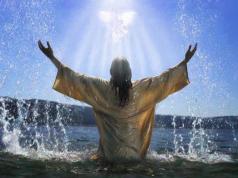Cathedral of St. Sava (Serbia) - description, history, location. The exact address and website. Reviews of tourists, photos and videos.
- Hot tours to Serbia
Previous photo Next photo



The main temple of the Serbian Orthodox Church and the largest church in the Balkans, St. Sava Cathedral is located in the historical district of Belgrade Vracar. With its majestic simplicity, the temple resembles the best Byzantine buildings - and this is no coincidence: the Sophia Cathedral in Constantinople, now the Hagia Sophia Museum, was taken as the basis for the architectural plan. However, the temple still looks Serbian thanks to the four turrets characteristic of the Balkans surrounding the central dome.
A bit of history
Saint Sava Cathedral is a relatively recent structure. Its construction began in 1894 at a memorable (and tragic) place for the Orthodox, where, by order of the Ottoman ruler Sinan Pasha, the relics of St. Sava, the first archbishop of Serbia and the national hero of the country, were burned. Until 1939, however, only walls rose, then construction stalled due to the Second World War - and work resumed only in 1986. The temple was officially opened in 2004 and today boasts an impressive area of more than 7500 square meters. m.
Address: st. 2a Krushedolska, Belgrade
The largest Orthodox cathedral located on the Balkan Peninsula is the Temple of St. Sava. It was built on the site where the relics of the Saint were burned by the Ottoman authorities. Erected on the Belgrade plateau, today the cathedral majestically and proudly rises above the city.
Let not the hand of the giver fail
The temple exists at the expense of voluntary donations of parishioners; reconstructions are constantly carried out here. If you look from a spiritual and technical point of view, then the building is not a cathedral, since the residence of the patriarch is not located here. However, tourists are used to calling it the cathedral because of its large size and significance.
Planning and preparation for construction went on for many years, finally in 1935, work began, but the Second World War made its own adjustments. Only 40 years after the end of the war, the construction of the temple continued. The most important stage was completed in 1989, when the dome was completed, which weighs 4,000 tons. They built it separately, on the ground, and then, together with the cross, they installed it on the temple building.
At the end of the 20th century, when Yugoslavia was bombed, the Patriarch of All Rus' Alexy II came to the temple. In the still unfinished temple, together with the Patriarch of Serbia, he served a prayer service for the end of suffering and the war in Serbia.
The grandeur of architecture
In 2009, the building of the iconic landmark of Serbia was completely built, but the finishing work is still going on. The total height of the building is 82 meters, the temple stands at an altitude of 134 meters above sea level, its magnificent, picturesque outlines can be observed from all over Belgrade.
This monumental architectural monument was modeled after Sophia Cathedral and has a certain similarity in scale, but the diameter of its dome and height is slightly larger. On top of the domes there are 18 crosses with gilding, and the bell tower has a luxurious belfry of 49 bells. Within its walls, the church can immediately receive 10 thousand believers, and the luxurious choir can accommodate 800 singers.
The facade of the Belgrade landmark is decorated with beautiful white marble, today the interior is decorated with bright mosaics, and an amazing fresco of Christ Pantokrator has been created under the main dome. This masterpiece is one of the most beautiful paintings in the entire world of Christian art and architecture, only eyes on the face of Christ the Savior, more than a meter in size.
Continuing the inspection of the temple architecture of the city, it is worth visiting the only Muslim temple preserved in the city - Bayrakli Mosque.
Address: Krushedolska street 2a, Belgrade, Serbia. Opening hours: from 9:00 to 18:00. How to get there: by tram number 2, number 11 or number 13.
The pearl of Belgrade and the center of Christianity in the Balkans can rightly be considered a huge, luxurious Cathedral of St. Sava. This temple became the decoration of the Vrachar hill.
The history of the creation of the Temple of St. Sava
Sava, or Savva, was the son and heir of the creator of Serbia, Stefan Nemanja. From a young age, the guy became interested in religion, made a pilgrimage to the holy Mount Athos, where he lived for a long time, comprehending the foundations of the doctrine, and later carried the holy faith in the people and contributed to the unification of many Balkan peoples into a single and friendly state. By the end of his life, his father Stefan was also imbued with the ideas of Christianity, abdicated the throne and chose life in the silence of the monastery, founding a holy monastery called Hilandar.
Later, Savva became the first and most significant bishop of Serbia, he literally created a state and brought faith to hundreds and thousands of his subjects. After the death of the bishop, and he lived in 1175-1236, his relics were sent to the Mileshevo Monastery. With the coming to power of the Turkish rulers, it was decided to deal harshly and unconditionally with Christian faith, for this, the relics of Savva were brought from the monastery and burned in front of the people. A terrible event happened back in 1595 by order of the governor of the Ottoman Empire, Sinan Pasha, on Mount Vracar.
It is quite logical that with the fall Turkish yoke Christians wished to restore the memory of the bishop. To do this, a small wooden church was built on the site of the burning, and the activists created the "Society for the Construction of the Church of St. The second competition was already held in 1926, then the project of Alexander Derok and Bogdan Nesterovich won.
Construction began in 1935, until 1939 the workers managed to complete most of the walls, but the construction was prevented at first by the Second World War and then the socialist system. Large-scale work resumed already in 1984 and ended relatively recently - only in 2004. But the process of interior design is still ongoing.
What is interesting about the cathedral for tourists
 As planned by the architects, it repeats the outlines of the famous Hagia Sophia in Istanbul, but there are obvious differences. Firstly, it was decided to combine the basilica and the central building, and secondly, the four turrets on the sides of the main dome, traditional for local architecture, give the building a Serbian zest.
As planned by the architects, it repeats the outlines of the famous Hagia Sophia in Istanbul, but there are obvious differences. Firstly, it was decided to combine the basilica and the central building, and secondly, the four turrets on the sides of the main dome, traditional for local architecture, give the building a Serbian zest.
The resulting temple was truly unique. First of all, its size is striking - an area of \u200b\u200b7570 square meters. m, a width of 81 m and a length of 91 m, the height of the dome is also surprising - 65 m, which significantly exceeds the size of the famous Istanbul Cathedral, which the architects were equal to. The scale of the construction will help to imagine the capacity of the temple - at the same time more than 10 thousand parishioners can watch the service in it, and about 800 singers freely fit in the choirs!
Externally, the cathedral does not look too massive due to the lightness of the Byzantine style of the reign of Justinian I, the luminous snow-white facade blends beautifully with the dark gray coating of the towers and domes. The central dome itself is also striking, which has a height of more than 35 m. On a grand scale, the builders approached interior decoration. Some of the eyes of Christ, depicted on the vault of the church, are more than a meter in size. Traditional for churches are lavishly decorated altars and icons, detailed painting with religious motifs.
Around the Orthodox sights of Belgrade, a beautiful and well-groomed park is spread, in which visitors to the cathedral and just passers-by like to stroll. Also nearby are some tourist sites, such as the unique National Library, which houses a great collection of books and documents.
 Size Temple of Saint Sava is the largest in the Balkans, and on the continent it is second only to the Cathedral of Christ the Savior in the capital Russian Federation. Naturally, the shrine has become the center of Christianity not only in Belgrade, but throughout Serbia, and parishioners from other countries come here to pray for health and good luck. And from an architectural point of view, the building is of considerable interest, so tourists must include it in their travel itineraries.
Size Temple of Saint Sava is the largest in the Balkans, and on the continent it is second only to the Cathedral of Christ the Savior in the capital Russian Federation. Naturally, the shrine has become the center of Christianity not only in Belgrade, but throughout Serbia, and parishioners from other countries come here to pray for health and good luck. And from an architectural point of view, the building is of considerable interest, so tourists must include it in their travel itineraries.
Temple of St. Sava in Belgrade on Vracar - the temple of the Serbian Orthodox Church, high altar which was consecrated in honor of the first Serbian archbishop and national hero of Serbia - St. Sava.
The place for the construction of this impressive structure was not chosen by chance. The Church of St. Sava (Orthodox Church) stands on the spot where the Ottoman Turks, commissioned by the Ottoman commander Sinan Pasha, who enslaved the Serbian lands, barbarously burned the relics of the greatest Saint and the first archbishop of Serbia.

The construction of the Temple began in 1894. Initially, in the 35th year of the 19th century, on the site of today's cathedral, a very small Church was built, which, as the people decided, does not correspond to the scale of personality that the 1st Patriarch of Serbia represented. In this connection, in Serbia, at the end of the 19th century, it was decided to create a commission for the construction of the Temple, which appointed a competition for the development of a new construction project. After many years of planning and choosing the right architectural solution, the actual construction of the Temple began in 1935. As a result, by 1939 only the walls were rebuilt, the height of which was 12 meters.
However, construction was soon interrupted by the outbreak of World War II. After the war, the government of Yugoslavia imposed a ban on the continuation of construction. Permission was obtained only in 1984, but in 1990 the war again, and all donations were directed to the purchase of medicines and food. It was decided to resume it only after almost half a century in 1986.

In 1989, a dome was erected on the Temple. The biggest achievement during this construction was the lifting of the dome weighing 4,000 tons. The uplift lasted 40 days and was completed on June 26, 1989. It is interesting that they built the dome on the ground, and then, having erected a gilded cross on its top, they lifted it and set it in its proper place on the top of the Temple. Construction was continued only in 2000 and continues to this day. Now the Temple is in the stage of final finishing.
 The interior of the Church of St. Sava PHOTO AFP / KOCA SULEJMANOVIC
The interior of the Church of St. Sava PHOTO AFP / KOCA SULEJMANOVIC At the wall of the Temple meets the monument to St. Sava, made by the Russian sculptor Vyacheslav Lykov.
In 1999, when NATO bombed Yugoslavia, the Russian Patriarch Alexy II specially came here and in the unfinished church of St. Sava, together with Patriarch Pavel of Serbia, served a prayer service for an end to the war and suffering in Serbia.
Today, the Temple of St. Sava in Belgrade is the world's largest active Orthodox church!

The external height of the cathedral is 79 meters, and the area is 91 by 81 square meters. m., which is more than 20 sq. m. more than his Orthodox "brother" of the church "Christ the Savior" in Moscow. Under the main dome of the cathedral, there is a fresco in the form of the image of Christ, which is one of the largest paintings in all Orthodox world. A total of 18 gilded crosses of different sizes are installed on the domes. The bell tower includes 49 bells. The Temple of St. Sava can simultaneously accommodate ten thousand believers.
The fresco - the image of Christ, located under the main dome of the Savvinskaya Church is one of the greatest paintings in the entire Christian world. Only the eyes on the face of the Savior are more than one meter in size!
The temple is made in the Serbian-Byzantine style, in accordance with the basic principles of the construction of religious buildings. The facade of the temple is covered with white, as well as red and gray granite, and a monumental mosaic of Christ the Savior was created on the dome itself. Despite the fact that the construction of the temple was completed in 2004, its interior decoration continues to this day.

The Temple of St. Sava is one of the most recognizable symbols of Belgrade, Serbia, as well as the entire Christian people.

The Temple of St. Sava has a dominant position in the architecture of Belgrade, as it is visible from all access roads to Belgrade. Even if you are not a believer, it is still this temple it is obligatory to visit and view, as it carries the historical and cultural value of the Serbian people.
Liked the post? Do not forget like ❤ and subscribe to our page!
Temple of St. Sava in Belgrade is considered one of the largest Orthodox cathedrals in the world and the largest in Belgrade. It was built on the spot where in 1595 the Ottoman governor Sinan Pasha burned the relics of the founder of the Serbian Orthodox Church to desecrate his memory, the Serbian people and all Christian teaching. It happened on Mount Vracar.
Saint Sava was the son of the founder of the Serbian state Stefan Nemanja, the first archbishop of Serbia. The ruler's son chose the spiritual path from a young age, and his father came to it closer to old age, abdicated the throne, took tonsure, and together with his son founded the Hilandar monastery. After the death of his father, Saint Sava at the beginning of the 13th century made many efforts to establish Christianity on Serbian soil and founded churches, monasteries and schools. After his death in 1235, the relics of the archbishop were transferred to the monastery of Mileshevo, from where, more than three hundred years later, they were brought to Belgrade by order of Sinan Pasha.
The first temple on the site of the current one was built in 1835, it was a small church, which did not correspond much to the scale of the personality of the first patriarch of Serbia. Therefore, at the end of the 19th century, the "Society for the Construction of the Temple of St. Sava" was created in Serbia, which held a competition for the development of the project - five competitive works were evaluated by a special commission in St. Petersburg, but none was chosen. After the First World War, preparations for the construction of the temple resumed, and in 1926 another competition was announced, in which the project of Bogdan Nestorovich and Alexander Derok in the Byzantine style won. The project was made in the likeness of the St. Sophia Cathedral in Constantinople, and work on the implementation of this project began in 1935 and was completed only in 2004. A big break arose in connection with the Second World War, after which work resumed only in 1984.
The height of the temple of St. Sava is 70 meters, which is 15 meters higher than the sample - the Hagia Sophia. The area of the temple exceeds 7.5 thousand square meters. meters. In size, the Cathedral of St. Sava is second only to the Moscow Cathedral of Christ the Savior. The temple is called a symbol of the resilience of the Serbian people.








